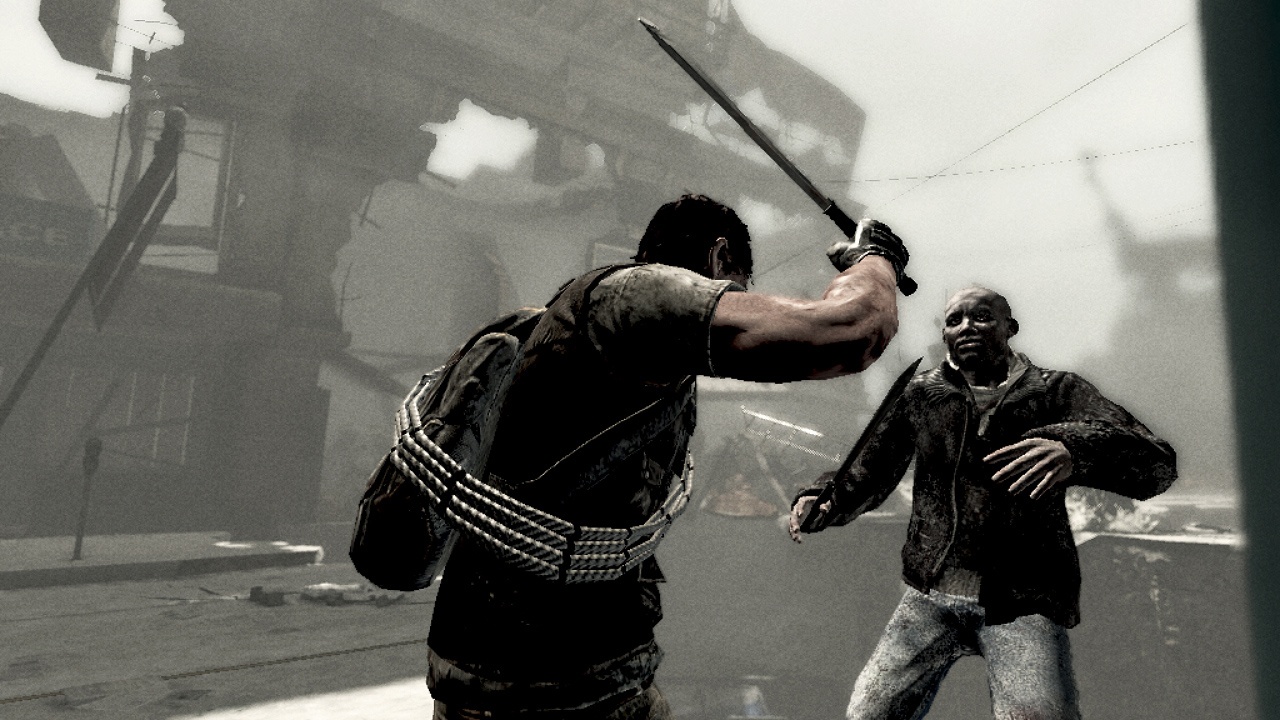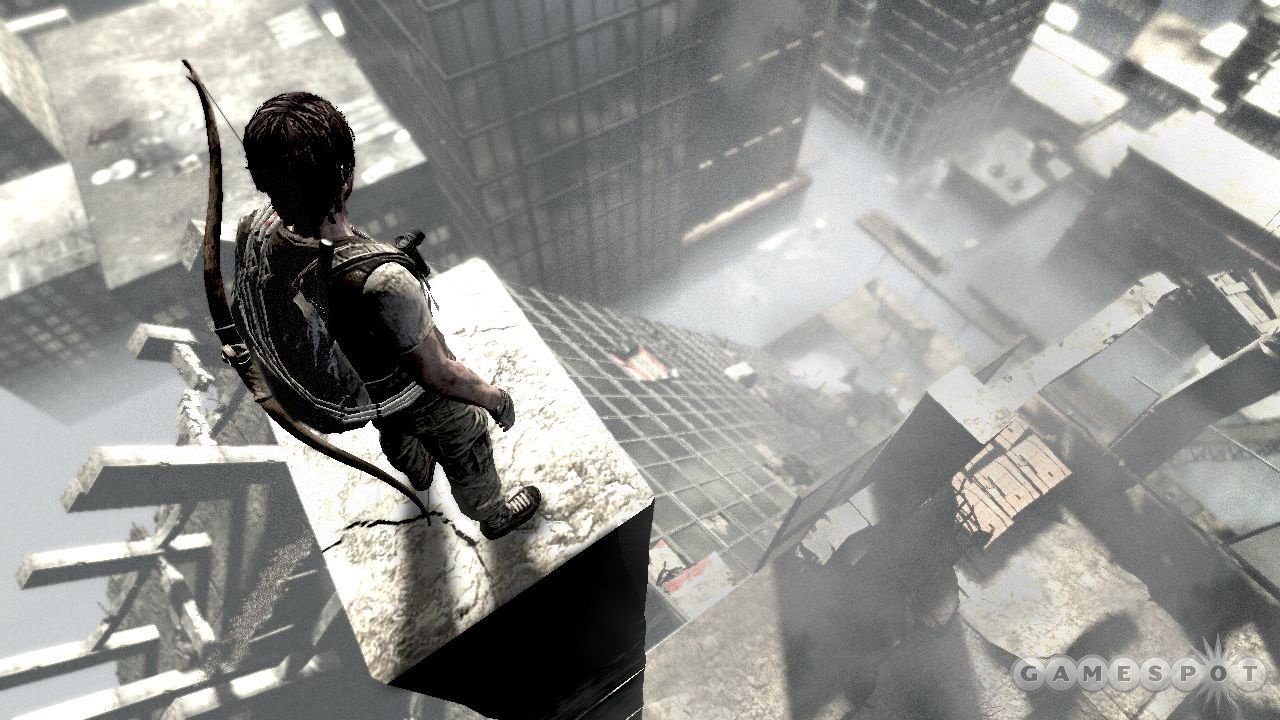Sound Byte: Meet the Composer - Jeff Broadbent
We talk to the composer who recently scored the new survival action title I Am Alive.
The upcoming action game I Am Alive will be presenting a different non-power fantasy take on the postapocalyptic backdrop. Gamers will be placed in the shoes of a lone everyday man who's surviving in a ruined city, looking for his loved ones. Therefore, the game's aesthetics take a brooding, solitary tone, a job that composer Jeff Broadbent is willing to mirror in I Am Alive's musical score.
We spoke to the composer about his background in music and the I Am Alive OST.
GameSpot: How did you get started in the business?
Jeff Broadbent: I always had a strong interest in music and began learning to play the piano and saxophone at an early age. I studied music theory and composition starting at age 16 and developed an interest in film and game music at this time. In college, I obtained bachelor's and master's degrees in music composition and later studied film and game scoring at UCLA.

I began composing for smaller games, including some Wii titles, mobile games, and so forth. I was also writing a lot of high-energy action and trailer music for different music-production companies. When I got the opportunity to compose for the game Transformers: Dark of the Moon, it was a great fit. I continually make efforts to reach out to game companies and developers, and to network and meet new people, as well.
GS: Who are your main influences when composing video game music?
JB: Each game is different, and, as such, I strive to create a unique sonic approach and musical direction depending on the game. However, I draw inspiration from a variety of sources, including great film composers like James Horner and John Williams, as well as more contemporary composers, such as Harry Gregson-Williams and Cliff Martinez.
Coming from a classically trained composition background, I have a love for the great composers of the ages, including Mahler, Brahms, and Beethoven, as well as modern masters, such as Alban Berg, Toru Takemitsu, and Joseph Schwantner. For mixing techniques, I listen to electronic and popular music as well, as the production quality is top-notch.
GS: What will you be bringing to the table in the I Am Alive soundtrack?
JB: The elements of ambiance, sonic immersion, and emotion are all very important in the soundtrack. I Am Alive features a desolate environment--a torn world in which the protagonist struggles to survive and find his family. The ambient sections of the music fit well with the visual imagery, helping to create an engaging sound scape that is tied to the world. I was very careful in the selection of sound sources and instruments, to ensure that the music would be connected to the environments themselves.
While I Am Alive is a large, cataclysmic disaster, it also has a personal element with the protagonist searching for his family and protecting the young girl Mei. Because of this, I wanted to create some emotional themes to represent the connection the protagonist has with Mei, and also his hope in eventually finding his family. This music stands in contrast to the drastic situation of fear, abandonment, and isolation that is experienced and serves to portray his emotional reasons for carrying on.
GS: What are your references when looking for music to fit the postapocalyptic vibe of the game? Were there any particular film scores you get inspired by when doing the game's OST?
JB: The game's audio director, Zhang Lei, had the idea that the music could represent the various environments of the game sonically. A music example he shared with me is the piece "Fog Tropes," composed by Ingram Marshall. This composition incorporates the tones of a fog horn with a brass ensemble, producing a unique combination of music and sound design. This was a great example of how a unique blend can be achieved by mixing musical instruments and sound sources.
A couple of scores that were helpful for inspiration were from the film The Hurt Locker, by Marco Beltrami and Buck Sanders, and Sunshine, by John Murphy. The Hurt Locker used some very harsh dissonance to create emotions of fear and tension. In Sunshine, the use of ambiance is prominent to communicate the vastness and isolation of space.
GS: What are the main instruments used for the music? Why did you pick those particular instruments?
JB: While exploring in non-combat situations, the music is primarily based on ambiances and sound-design elements. For example, in a part of the game where you are inside an abandoned pier park, materials such as bell tones, bowed metal instruments, and reverb-saturated synthesiser tones are used. It was important for the ambient music to fit closely with the environment itself, so I would incorporate natural elements, like the bell tones, with synthetic elements to create the overall sound scape.
I think of it like an impressionistic painting--you have the background wash of colour, and some foreground elements as well, but the overall visual impact is one of essence rather than discrete form. With the ambient music, likewise, I attempted to convey sonically the overall musical feel, but without using discrete melodies.
For the music that is used when engaged in combat, a heightened sense of fear and tension was needed. Instruments used here include dissonant string techniques, large percussion, distorted synthesiser tones, and sound-design-inspired rhythms. The percussion provides a driving, brutal, almost primeval pulse, while the harsh strings and synthesiser tones add levels of dissonance that invoke fear.
For the main theme of the game, solo piano was used. We chose solo piano, because it represents the sense of isolation. In the main theme, the solo piano plays a simple yet haunting melody, on top of ambient elements and percussion. In a way, it sonically represents the main character pitted against the desolate world he finds himself in.
For the tender emotional music used for Mei, as well as the man reminiscing about his lost family, a combination of gentle strings, piano, soft ambiance, and solo oboe were used. The solo oboe is the instrument that represents Mei and is used to convey the bond that forms between her and the protagonist.
There is also a peaceful moment in the game, in which the man finds refuge with a fellow survivor named Henry. The music here is presented with peaceful violins and solo piano, as well as soft ambiance. This segment is a safe haven, and the music reflects that.
GS: What track took you the longest to compose? Why?
JB: The music that took the longest to compose was the music for the combat sections. We wanted this music to capture the real fear of combat, of struggling for your life against your assailants. We didn't want it to come across as your typical action music. It took several revisions to get the right tone for this music, as we experimented with different approaches. In the end, it was worth it, as the music conveys fear and terror, but in a unique, sound-design-inspired way, which departs from the usual conventions.

GS: When players get hold of this title in March, which pieces of music do you wish for them to keep an ear out for?
JB: I would certainly keep an eye out for the main theme, of course. I'm also fond of the emotional music in the game for Mei, the protagonist's family, and his friend Henry. In addition, it can be enjoyable to simply listen to the ambient music and see if you can pick out some sonic elements from the environment you find yourself in.
For example, at one point in the game when you are searching for a lost survivor, you can hear echoes of female vocals in the ambiance, which represent the lost individual. Subtle things like that make the music interesting.
GS: What will you be doing in the future after I Am Alive?
JB:I'm preparing to begin scoring a big game for a major publisher/developer in the next few weeks, which will be a very exciting project! I wish I could say more, but it's not time yet to talk about it. I'm also slated to score another great game in a few months and am currently working on some action and trailer music for a couple of music-production companies.
I Am Alive is out now for XBLA and PSN. To hear more of the game's music, check out the recent I Am Alive companion app.
Got a news tip or want to contact us directly? Email news@gamespot.com
Join the conversation